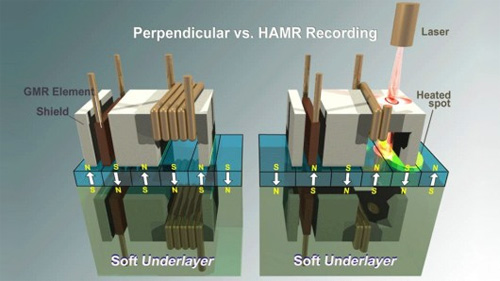Seagate is working to create 20 TB of hard drives

Hard drive manufacturing has always been one of the critical sectors of the industry, in general, everyone understands why. As soon as an accident happened somewhere in the factory for the production of hard drives, or, moreover, a group of factories stopped working (due to the flood), the cost of laptops, ultrabooks, external hard drives increased rapidly. It goes without saying that nowadays more and more fast and more voluminous hard drives are required. Despite the fact that the technological limit in this area has been practically reached, manufacturers do not give up. For example, Seagate is currently working on 20 TB of hard drives, which are scheduled to begin production by 2020.
The new hard drives will work with HAMR technology (Heat-Assisted Magnetic Recording). The technology is not new, in the same Seagate special department has been developing in this direction since 1998 . But it looks like the company has begun to make some progress, as the technology was demonstrated at CEATEC 2013 in Tokyo.

Here, data is recorded with the participation of a heating laser. According to the developers, the laser heats the surface of the hard drive, which allows you to record data more densely, if I may say so. As a result, with the previous media size, you can get a larger amount of space available for data storage.
The technological limit for modern hard drives, as mentioned above, has been reached. Theoretically, without heating and other tricks, data can be recorded at a density of 1 Tbit per square inch. A density of about 750 Gbps per square inch has been achieved. If you reduce the cell size further, then there will be an arbitrary change in polarity, which will lead to the impossibility of further work with such a carrier.
When heating the surface with a laser, the developers say, the data recording density can be increased without threatening to get an arbitrary change in cell polarity. In Tokyo, a test hard drive with this technology was demonstrated. The company hopes to launch HAMR disks by 2016, gradually increasing data recording density. And by 2020, perhaps we will see 20 terabyte hard drives.
Via seagate
